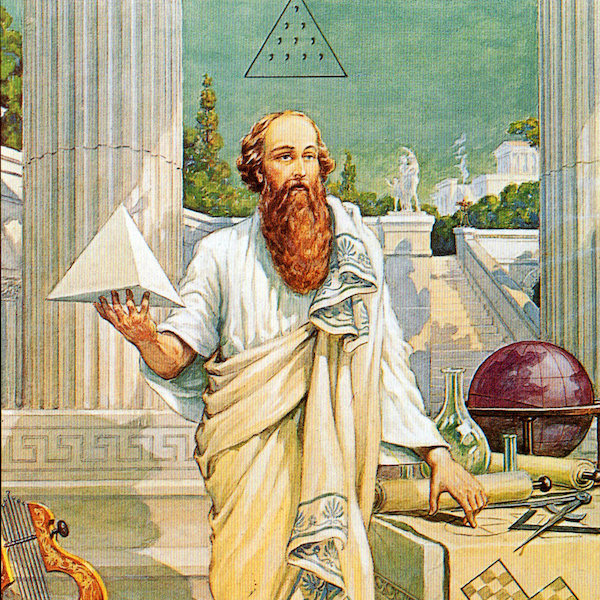
The Pythagoreans believed that music was a purification for the soul, just as medicine was a purification for the body.
The ancient Greek philosopher and polymath, Pythagoras (c. 570 – 495 BC) said that all things in cosmos – κόσμος are made of numbers ensuring that the universe functions in order and harmony. Known with his pioneering theories on music and mathematics, he proclaimed that cosmos is in harmonious motion precisely timed and structured.

The harmonious and repetitive rotations of the spheres emit celestial melodies which he phrased as musica universalis – the music of the spheres. He put forth that the planets and stars move according to mathematical equations, which correspond to musical notes and thus produce a symphony though inaudible on earth. 2500 years after his pioneering theorem of mathematics and musica universalis, contemporary astrophysics discovered the orbital resonances, the music of the planets in specific numerical proportions to their orbital motions.
Influenced by the studies of Pythagoras, Aristotle (c. 384 – 322 BC) wrote in Metaphysics that the Pythagoreans, who were the first to take up mathematics, not only advanced this subject, but saturated with it, they fancied that the principles of mathematics were the principles of all things. Their belief in the mystical significance of numbers became known as numerology, the lore of attributing mystical qualities to numbers :
1
The number one, the monad represents the origin of all things. Monad – μονάς meaning singularity refers to the Supreme being, divinity or the totality of all things. Monad is the beginning of existence.

2
Monad caused the dyad, δυάδα, the Greek word for two, which caused the numbers, which, in turn, constructed the point, then lines, etc.
3
Three is an ideal number because it has a beginning, middle and end. It is the smallest number of points that could be used to define a plane triangle.
4
Four signifies the four seasons and the four elements – fire, air, water and earth.
7
Seven is sacred because it represents the cosmic creation, it is the number of planets and also the number of strings on the celestial instrument lyre.
10
Ten is regarded as a masterly number because 10 = 1 + 2 + 3 + 4. Ten contains all and it symbolizes unity arising from multiplicity.

Pythagoras devised the triangular figure Tetractys, consisting of four rows which symbolize the four elements of creation, wherein the points add up to ten, and the peak of the triangle represents the Monad.
He believed in the mystical function of the Tetractys in binding cosmic order and his configuration would be used as a pillar in monumental architectural designs in the ages to come.

Plato (c. 428 – 348 BC) also wrote that geometrical proportions bound the cosmos together rather than mechanical forces.

From Ancient Greek to Renaissance scholars, the axiom holds that God created the universe according to mathematical, geometric and harmonic principles. In the universal scheme, music and mathematics are directly linked because there are mathematical structures underlying a musical piece which render its rhythm and beauty. These four fundamental studies – arithmetic, geometry, astronomy and music – compose the second curricular stage – the quadrivium – which is extensively covered in Plato’s Republic. Since antiquity, it is considered as the foundation of all sciences. Quadrivium focuses on the study of number and its relation to time and space :
Arithmetic is pure number, geometry is number in space, music is number in time, and astronomy is number in space and time.

You can listen to the music of the spheres here :
Duygu Bruce
You can read more about the Musical theory of Pythagoras and the Myths of Creation







